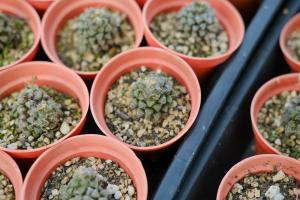How to Make a Water Desalination Plant
Water desalination is the process of removing salt and other minerals from seawater or brackish water to make it suitable for drinking and agricultural use. In this article, we’ll discuss how to make a water desalination plant using the reverse osmosis (RO) process.
Step 1: Pre-Treatment
Before the seawater or brackish water is passed through the RO system, it needs to be pre-treated to remove any impurities and suspended solids. This is done through a series of pre-treatment processes such as screening, sedimentation, and filtration. The pre-treatment process ensures that the RO system operates efficiently and has a longer lifespan.
Step 2: Reverse Osmosis (RO) Membrane System
The heart of a desalination plant is the RO membrane system. In this process, the pre-treated water is pumped through the RO membrane under high pressure. The RO membrane has small pores that allow water molecules to pass through but prevent salt and other minerals from passing through. The water that passes through the RO membrane is called permeate or product water, which is suitable for drinking and agricultural use. The water that does not pass through the membrane, called reject or brine water, is discharged into the sea or reused for other purposes.
Step 3: Post-Treatment
The permeate water from the RO membrane still contains some dissolved impurities and needs to be post-treated to meet drinking water standards. The post-treatment process includes disinfection, pH adjustment, and remineralization. Disinfection is done through chlorination or ozone treatment to kill any remaining bacteria and viruses. pH adjustment is done to make the water less corrosive and improve its taste. Remineralization is done to add essential minerals, such as calcium and magnesium, that may have been removed during the RO process.
Step 4: Storage and Distribution
The final step in a water desalination plant is storage and distribution. The treated water is stored in a treated water tank before being distributed to the consumers through a network of pipes. The treated water is continuously monitored to ensure that it meets drinking water standards and is safe for human consumption.
Conclusion
Water desalination is a critical process that helps to provide clean and safe water to people in areas with limited freshwater resources. The process of making a desalination plant using the RO process involves pre-treatment, RO membrane system, post-treatment, and storage and distribution. It requires significant investment in terms of cost, energy, and maintenance, but it’s a sustainable option for meeting the growing demand for freshwater.

 how many times do yo...
how many times do yo... how many planted tre...
how many planted tre... how many pine trees ...
how many pine trees ... how many pecan trees...
how many pecan trees... how many plants comp...
how many plants comp... how many plants can ...
how many plants can ... how many plants and ...
how many plants and ... how many pepper plan...
how many pepper plan...






























